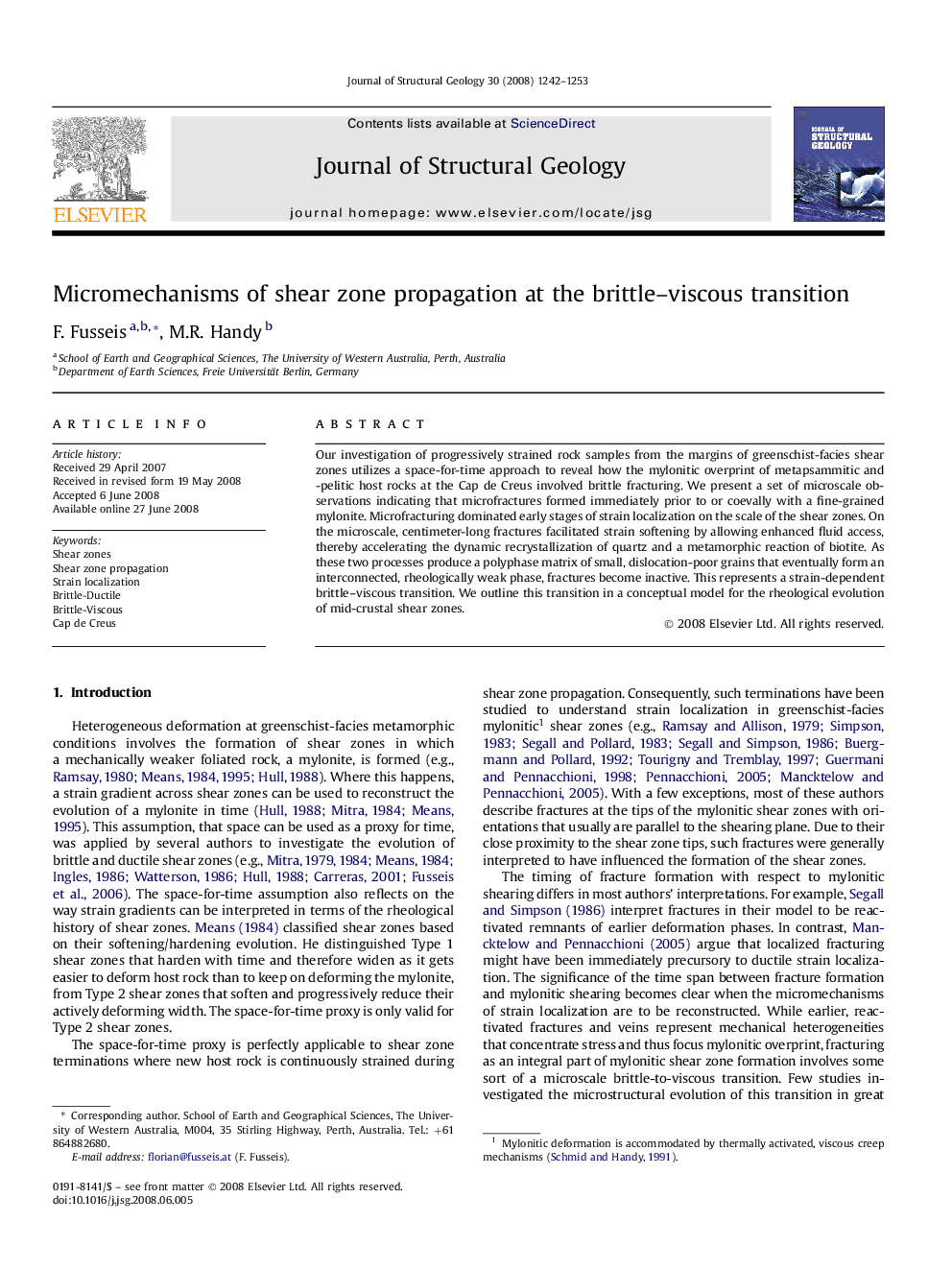| Article ID | Journal | Published Year | Pages | File Type |
|---|---|---|---|---|
| 4733621 | Journal of Structural Geology | 2008 | 12 Pages |
Our investigation of progressively strained rock samples from the margins of greenschist-facies shear zones utilizes a space-for-time approach to reveal how the mylonitic overprint of metapsammitic and -pelitic host rocks at the Cap de Creus involved brittle fracturing. We present a set of microscale observations indicating that microfractures formed immediately prior to or coevally with a fine-grained mylonite. Microfracturing dominated early stages of strain localization on the scale of the shear zones. On the microscale, centimeter-long fractures facilitated strain softening by allowing enhanced fluid access, thereby accelerating the dynamic recrystallization of quartz and a metamorphic reaction of biotite. As these two processes produce a polyphase matrix of small, dislocation-poor grains that eventually form an interconnected, rheologically weak phase, fractures become inactive. This represents a strain-dependent brittle–viscous transition. We outline this transition in a conceptual model for the rheological evolution of mid-crustal shear zones.
